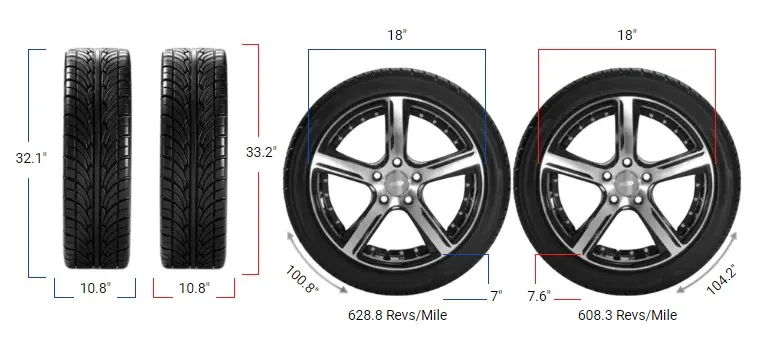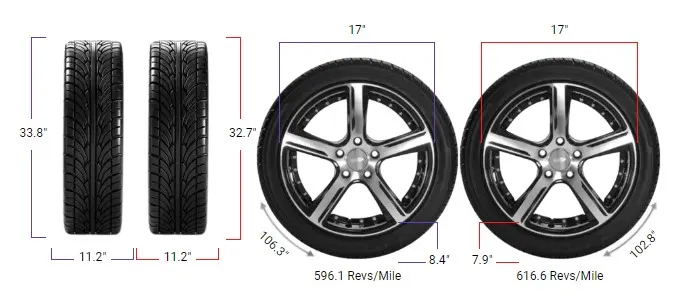Tire Size 225/70r15 vs 235/75r15
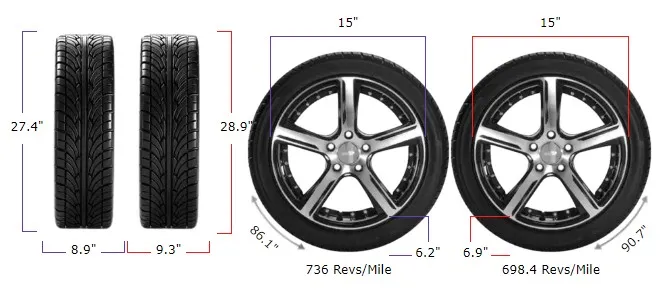
Are you considering switching from 225/70R15 to 235/75R15 tires on your vehicle? While these sizes are similar, there are some key differences to understand before making the change.
- The 235/75R15 tires are 1.48 inches taller overall
- The 235/75R15 tires are 0.39 inches wider
- Fuel economy may slightly decrease due to higher rolling resistance
- Ride comfort might moderately improve with the taller sidewall
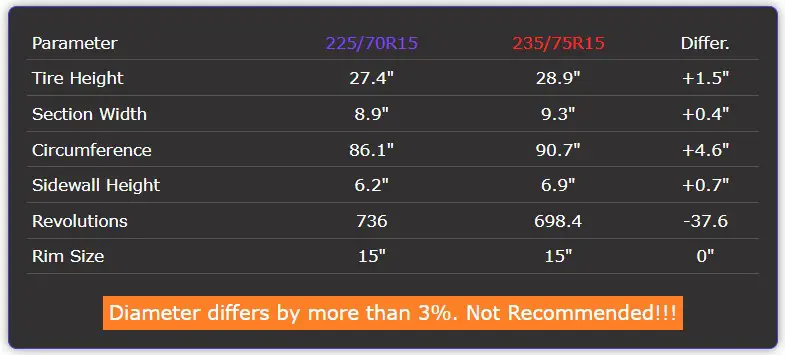
Fitment Guide
In this case, the 5.4% difference in diameter between the 225/70R15 and 235/75R15 sizes exceeds the recommended 3%. While it may be possible to make this swap, it could require modifications to ensure proper fitment and prevent problems.
On-Road Impact
Switching to a taller, wider tire like the 235/75R15 can affect various aspects of on-road performance. Here’s what you might notice:
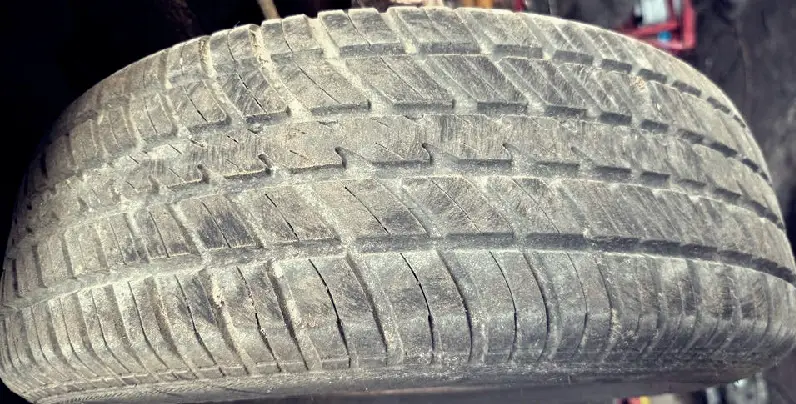
- Speedometer Accuracy: Because the 235/75R15 tires are 5.4% taller, your speedometer will read about 5% slower than your actual speed. At 60 mph, you’d actually be traveling closer to 63 mph.
- Fuel Economy: The larger 235/75R15 tires will have higher rolling resistance, which could slightly reduce your gas mileage. However, the effect is usually minimal.
- Ride Comfort: The taller sidewall of the 235/75R15 tires provides more cushioning, which could lead to a smoother, more comfortable ride. However, the difference may be subtle.
- Handling: The wider 235/75R15 tires offer a larger contact patch with the road, which could enhance grip and handling. However, the taller sidewall might also introduce more sidewall flex during cornering.
Off-Road Impact
If you take your vehicle off the beaten path, here’s how the switch to 235/75R15 tires could play out:

- Ground Clearance: The 1.48-inch increase in tire diameter will raise your vehicle slightly, providing a bit more ground clearance for navigating over obstacles.
- Traction: The wider footprint of the 235/75R15 tires could provide better traction on loose surfaces like sand or gravel.
- Sidewall Protection: The taller, beefier sidewalls of the 235/75R15 tires offer more protection against punctures and damage when driving over rough terrain.
What is the Main Difference Between 225/70r15 and 235/75r15 Tires?
The primary difference lies in the overall diameter, with 235/75R15 tires being 1.48 inches (37.5 mm) taller than 225/70R15 tires, equating to a 5.4% difference in diameter.
225/70r15 vs 235/75r15
| Feature | 225/70R15 | 235/75R15 | Difference |
|---|---|---|---|
| Diameter inches (mm) | 27.4 (696) | 28.88 (733.5) | 1.48 (37.5) 5.4% |
| Width inches (mm) | 8.86 (225) | 9.25 (235) | 0.39 (10) 4.4% |
| Circumference inches (mm) | 86.08 (2186.55) | 90.72 (2304.36) | 4.64 (117.81) 5.4% |
| Sidewall Height inches (mm) | 6.2 (157.5) | 6.94 (176.25) | 0.74 (18.75) 11.9% |
| Revolutions per mile (km) | 736.02 (457.34) | 698.39 (433.96) | -37.63 (-23.38) -5.1% |
| Speedo Reading | 20 mph | 21.08 mph | +1.08 mph |
Can I Use 235/75r15 Tires Instead of 225/70r15?
While it’s possible, it’s generally not recommended. The 5.4% difference in diameter between these sizes exceeds the suggested limit of 3%, which could lead to rubbing, clearance problems, and inaccurate speed readings.
Vehicle modifications may be necessary to accommodate the larger 235/75R15 tires.
How Much Taller is a 235/75r15 Tire Than a 225/70r15?
A 235/75R15 tire is 1.48 inches (37.5 mm) taller than a 225/70R15 tire. This represents a 5.4% increase in overall tire diameter.
How Much Wider is a 235/75r15 Tire Than a 225/70r15?
The difference in width between these two sizes is 0.39 inches (10 mm). A 235/75R15 tire measures 9.25 inches (235 mm) wide, while a 225/70R15 tire is 8.86 inches (225 mm) wide, resulting in a 4.4% difference in width.
Our Observation
On the plus side, the 235/75R15 tires could provide a touch more ground clearance, traction, and sidewall protection for off-road use, and may enhance on-road handling and ride comfort.
However, the 5.4% difference in diameter exceeds the recommended 3% threshold, so fitment issues are a concern. The taller tires will also throw off your speedometer by about 5%.
Additionally, the difference in width is only 0.39 inches (4.4%), so any performance benefits would be modest at best. In summary, while there are some potential upsides, we advise caution when considering this swap due to the fitment and speedometer discrepancies.
Consulting with a qualified tire professional is recommended to determine if this change will work for your specific vehicle application.


